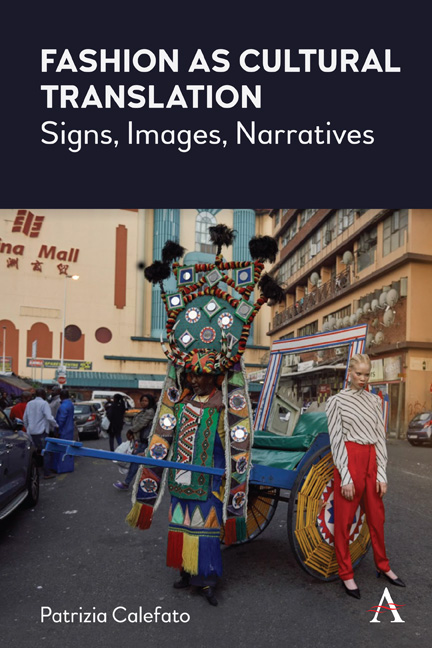Book contents
- Frontmatter
- Contents
- Introduction: Fashion as Cultural Translation in the Hyperconnected World
- Supplement to the Introduction: Fashion, the Hyperconnected World and Coronavirus
- 1 Time
- 2 Spaces
- 3 Fashion as Cultural Tradition: Italian Style
- 4 Fashion as Cultural Translation
- 5 Clothed Bodies
- 6 The Body as Text
- 7 Humans and Beyond
- 8 Fashion and the ‘Second Nature’
- 9 Fashion, Communication and Converging Media
- 10 Fashion Narratives in Visual Culture
- Conclusions: Fashion as an Idea about the Future
- References
- Index
9 - Fashion, Communication and Converging Media
Published online by Cambridge University Press: 18 February 2021
- Frontmatter
- Contents
- Introduction: Fashion as Cultural Translation in the Hyperconnected World
- Supplement to the Introduction: Fashion, the Hyperconnected World and Coronavirus
- 1 Time
- 2 Spaces
- 3 Fashion as Cultural Tradition: Italian Style
- 4 Fashion as Cultural Translation
- 5 Clothed Bodies
- 6 The Body as Text
- 7 Humans and Beyond
- 8 Fashion and the ‘Second Nature’
- 9 Fashion, Communication and Converging Media
- 10 Fashion Narratives in Visual Culture
- Conclusions: Fashion as an Idea about the Future
- References
- Index
Summary
The Origins of Fashion Journalism
The French magazine Mercure Galant is considered the very first fashion magazine. Published in Paris between 1672 and 1724 (it changed its name to Mercure de France in 1678), the magazine published articles on literature, poetry, philosophy, accounts of mundane activities and fashion. At that period, this kind of journalism represented the evolution of the literary journal into a genre that was defined as ‘gallant’. During the Enlightenment, French philosophes disregarded this genre because they considered it of low cultural valence and unrelated to the literary and philosophical journalism to which they were dedicated. This debate was tied to the philosophic debate on luxury. In the eighteenth century, this debate involved intellectuals like Montesquieu, Diderot and Condillac, who were hostile towards luxury expenditures, and thus against fashion too. However, intellectuals did not always criticise luxury and fashion. For example, an entry of the Encyclopédie, attributed to Jean-François de Saint-Lambert, was devoted to luxury. Furthermore, to demonstrate the utility of luxury at the beginning of the century, the Dutch philosopher and doctor Bernand de Mandeville wrote a treatise containing the famous tale of the bees (Calefato 2014, 8).
The broader dissemination of early fashion publications dates back to around 1750. Before then, information on clothing circulated in forms that were untied to writing. For example, since the Renaissance, noble courts relied on observers and travellers to recount by the firsthand experience what they had seen in other courts and houses, from ceremonial clothing to etiquette. Other times, aristocratic families received or bought mannequins made of wood, porcelain or wax, called poupèes de mode (Zicoschi 1992, 110). The eighteenth century saw the birth of engravings – which were disseminated individually or as collections – and illustrations. At this moment, the representation of dresses and accessories worn by human models, both women and men, served two purposes: to promote present clothing and to reveal future ones. In other words, their aim was to communicate fashion. For costume historians, illustrations were used instead to catalogue clothes from the past. At this moment, a bond between objects, visual signs and language emerged, and this bond is still crucial in fashion as a communicative and cultural system.
- Type
- Chapter
- Information
- Fashion as Cultural TranslationSigns, Images, Narratives, pp. 93 - 104Publisher: Anthem PressPrint publication year: 2021



